Day 7 - Xi'an - Terracotta Warriors and Dumplings
Finally, the eighth wonder of the world--the Terracotta Warriors! Although we've seen pictures, getting up close and seeing the vast archaeological site is more than impressive. Actually there are 4 buildings with digging sites. The first is the largest, having about 6000 of the 8000 warriors although many of them are still being unearthed (about 2000 have been pieced together so far). They were all found in pieces and pieced together like a jigsaw puzzle, albeit an incredibly complicated and multifacited one. They are lined up, with their arms in various positions depending on the weapon they carried. There were also some next to horses - the cavalry. Each one is different, with different faces, costumes, arm positions, some kneeling, but most standing at attention. The design of their hair indicated their rank. Generals had at least two curly-cues of hair in the back, while infantry had none or one.
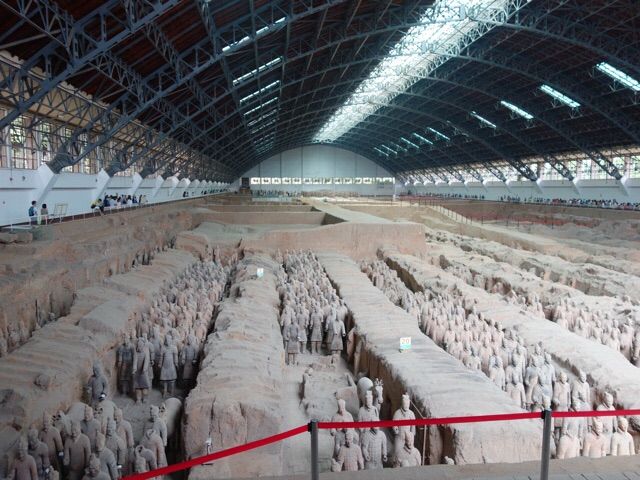
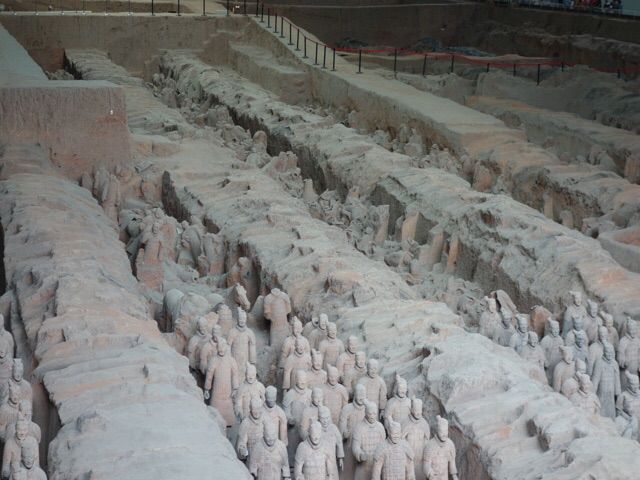
A farmer, digging a well in a field accidentally discovered them in 1974. Xian, a city that is over 2000 years old has great "feng shui" which is why many of the emperors chose this area to build their masoleums. However, this is not a mausoleum -- it is the army of soldiers intended to protect the tomb of the first Qin emperor, Qin Shi Huang. Over 3000 people used the clay prevalent in this area to make the warriors in around 221 BC. The emperor wanted a complete army to protect him in the afterlife. The warriors were originally equipped with weapons, but many were stolen by rebels who also destroyed many of the warriors.

Like other large sites, it was hard to stop taking pictures, and there were thousands of people there, mostly Chinese, as it is the most major visiting spot in Xian. The second and third buildings housed more of the warriors, along with some of the people working on the excavation as it is still a work in progress. Rather than taking relics and placing them in a museum, the museum was actually constructed to house the dig sites.
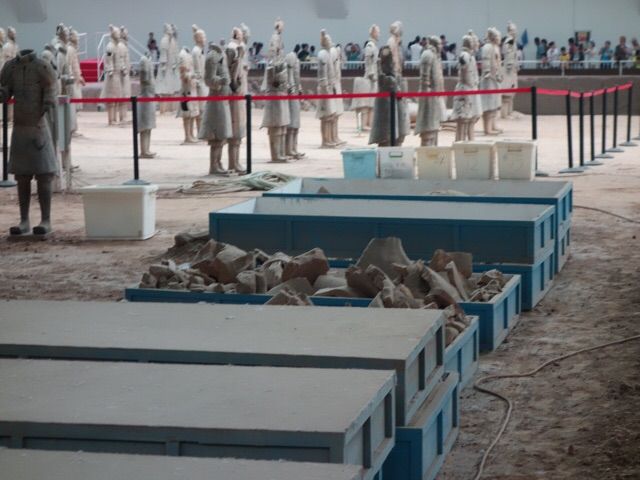
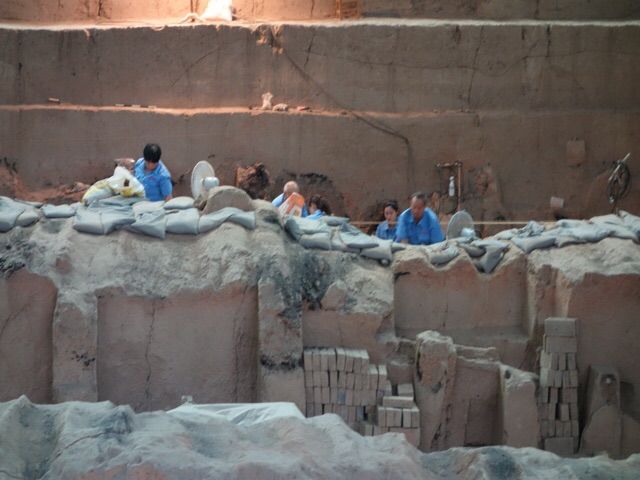

The last building houses two bronze chariots, parts of which were intact, but also repaired. Of course, Bronze lasts longer than clay or terracotta, so these are in pretty good shape.
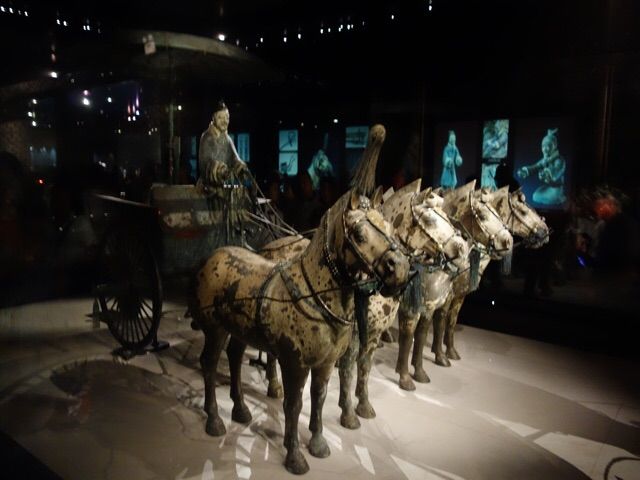
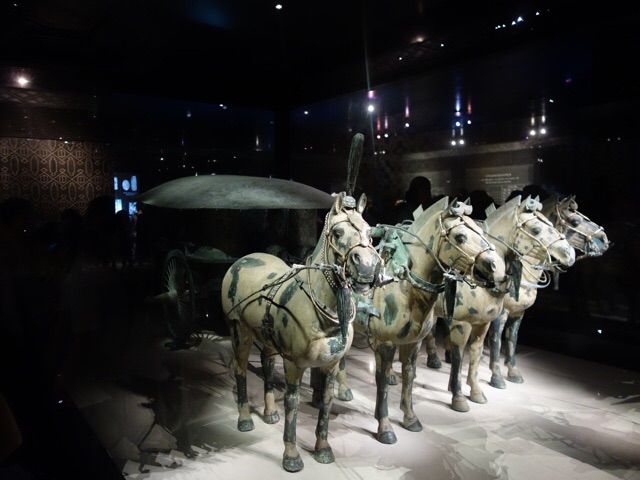
On the way back to the hotel, we stopped at a Jade factory. Lin Mountain, very close by is one of the primary Jade-producing areas in China, although the highest quality comes from western China and Myanmar. There are many different levels of jade, and this factory was part museum, part showroom and part factory.

Back to our hotel (Shangri La) in Xi'an for a quick rest. The longest "free" time we've been given on this trip is 1 1/2 hours. This one was about an hour. We boarded our bus for a most sumptuous dumpling feast at the oldest dumpling restaurant in Xi'an, about 100 years old. We were served 15 courses of dumplings. Besides being delicious, they make designs from the wontons--monkeys, ducks, flowers, etc.

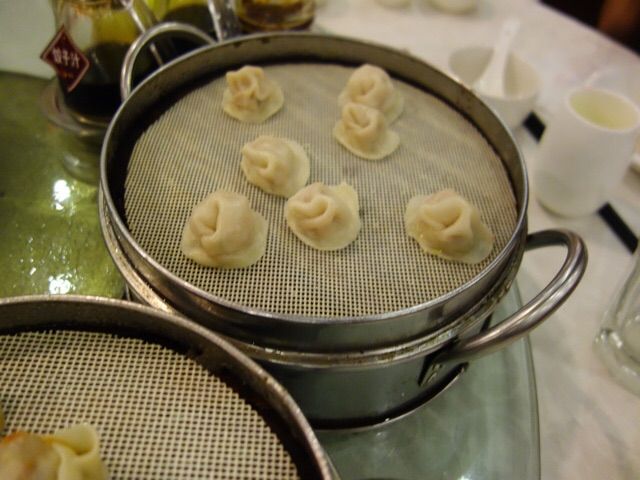


There is a saying in China--if you want to know about 2000 years ago, go to Xi'an. If you want to find out about 1000 years ago, go to Beijing. And if you want to know about 100 years ago, go to Shanghai. Tomorrow we leave for Shanghai, and Suzhou (sue-joe), an area that has many famous UNESCO gardens, and is sometimes called the "Venice of the East".



comments powered by Disqus